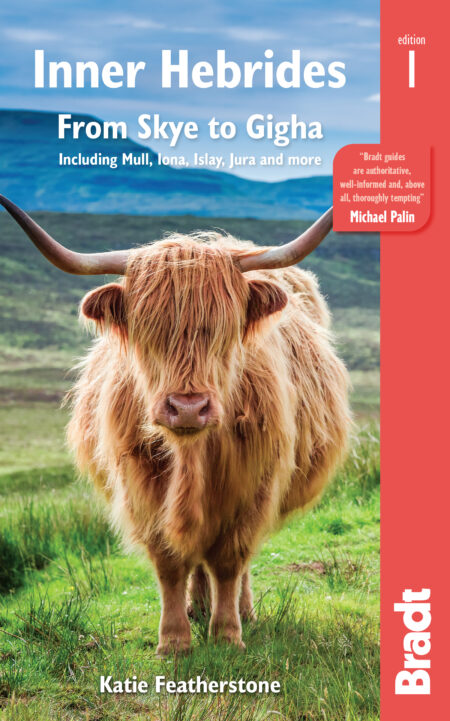Autumn sees many holidaymakers dream of winter sun, but you’ll find no such thing in the Inner Hebrides, a loosely scattered archipelago off Scotland’s west coast: instead, these islands steal the hearts of those who crave wild places. For Inner Hebridean communities and visitors alike, the elements are inescapable, and humans live alongside animals, outnumbered hundreds of times over.
In autumn, as the swallows make their return to Africa and basking sharks move out to feed in deeper waters, other species hunker down around the Inner Hebridean islands, waiting for the temperature to fall and violent storms to batter the coastline. While some animals and birds are year-round residents, others visit in passing on their journeys further south, or finally arrive after a gruelling flight, escaping even more extreme conditions in the Arctic Circle.
Come mid-September, Tiree, the west coast of Islay and parts of the other islands are exposed to the full force of Atlantic storms, with gusts of up to 100mph coming straight off the ocean. Not ideal visiting conditions, you might say. There are, however, calm days in-between, offering glassy waters in which to spot an otter’s distinctive V-shaped trail and still mornings to crouch quietly as the sun rises, hoping to witness a stags’ rut or photograph birds in the morning light.
To survive the winter in the Inner Hebrides, animals must be hardy, as must visitors, but the chance to see them in the wild, with a cosy fire and a dram of scotch waiting for you in the evening, is an experience you will never forget.
Autumnal avian delights
Featured in many beautiful and dramatic wildlife documentaries, the Inner Hebrides have long been a favourite destination for birdwatchers. Autumn is busy with passage birds; flocks of fieldfares and redwings, as well as waders such as dunlins, feed themselves up before migrating further south. Farmland species like twite can be seen in stubble agricultural fields, while choughs, easiest to spot on Islay’s RSPB reserves at the Oa and Loch Gruinart, swoop and dive throughout the colder months.
October is the time of the Inner Hebrides’ most spectacular wildlife event: the return of around 37,000 migrating barnacle and Greenland white-fronted geese to Islay. Seeing them first land is remarkable (and noisy), and you’re also likely to spot whooper swans and Brent geese as they drop by on their way from Iceland to Ireland. A smaller similar phenomenon takes place every evening throughout winter, when up to 1,000 white-fronted geese swoop down to use RSPB Loch Gruinart mud flats as a roost; wait in a bird hide around dusk to see them returning.
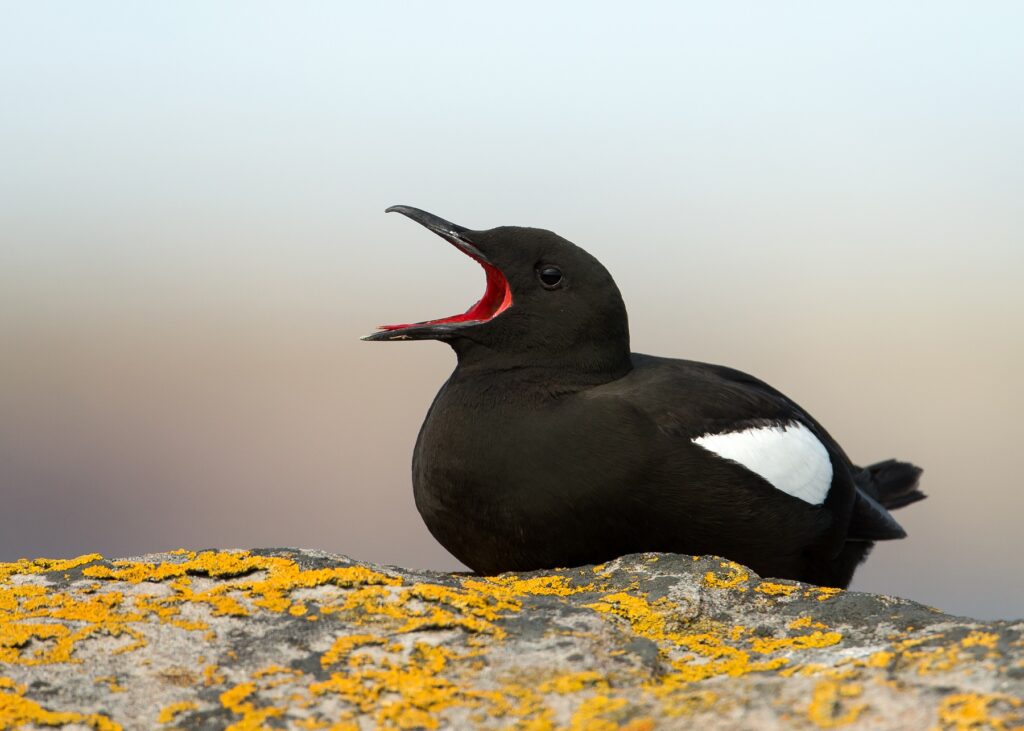
On the coast, razorbills, black guillemots and guillemots in winter plumage can be seen swimming near ferry ports. Puffins, better known for their high-density nesting sites in spring, float in large flotillas out to sea, while gannets, like arrows fired from the sky, plummet through the air at 60mph to catch fish they’ve clocked from above. Take warm and waterproof clothing aboard for your ferry journeys: while rough weather makes it harder to spot dolphins, it’s the perfect time to watch seabirds buffeted in the squall as they battle the elements to survive.
Both golden and white-tailed eagles are resident species on some of the islands and can be seen at any time of year; look out for golden eagles’ plunging displays in spells of clear weather at the coldest time of year. During winter, male hen harriers, with their black wing tips and white banded tails, are a distinctive sight, hunting for prey near RSPB Loch Gruinart and over the central moorlands of Eigg. Delicate merlins, the UK’s smallest bird of prey, hunt over the reed beds, boggy areas and heathland of Coll, preying on species such as meadow pipits and small wading birds.
Rutting red deer and diving otters
Scotland’s most iconic animal, the red deer, descends to the lowlands for winter. The beasts are at their most majestic during the autumn rut (September–November) – a visceral, antler-clacking display of dominance that decides which individuals secure the rights to sire that year’s offspring. Jura is thought to mean ‘deer island’, and perhaps 7,000 individual deer live there, while the red deer of Rùm have been studied intensively since 1953 – one of the longest-running and most comprehensive studies of any animal anywhere in the world.
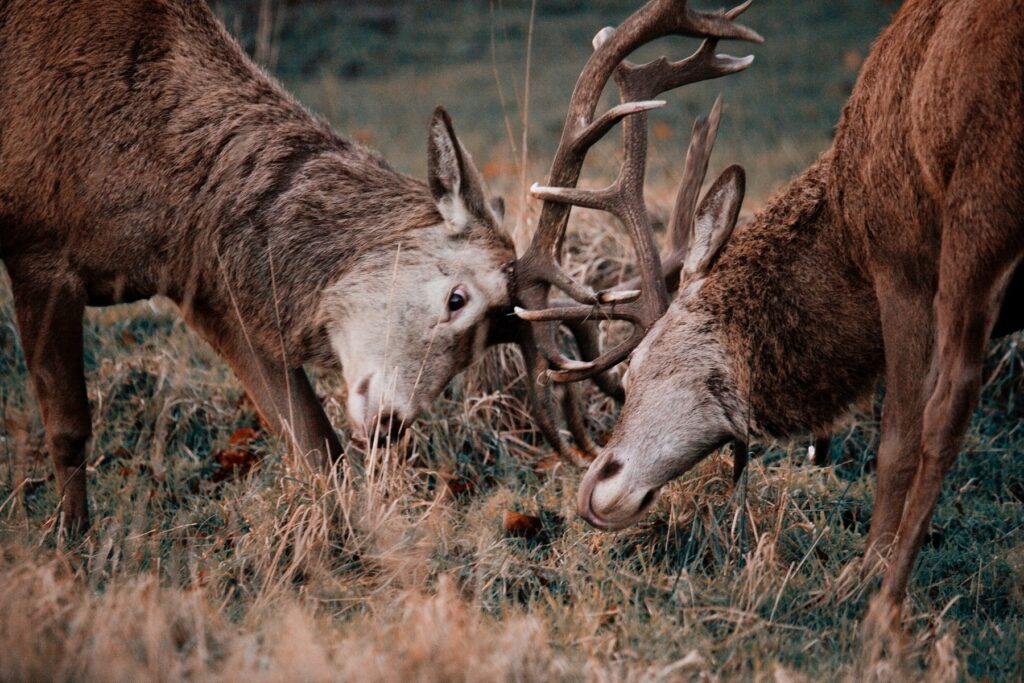
Sightings are absolutely certain on both isles, but the larger islands of Islay, Mull and Skye also have thriving populations. For the best chance of seeing a rut, set an alarm for the early light just after dawn, when the majority of fights take place. Do bear in mind that this aggression could get redirected towards humans if you get in their way, so keep a safe distance and don’t be tempted to approach.
Several islands have populations of feral long-haired goats – often descendants of those brought over for farming and wig making before the Clearances. These impressive – but smelly and cantankerous – animals roam rogue around the craggy coastlines of Rùm, the Oa and Colonsay, growing huge, curled horns and shaggy winter coats.
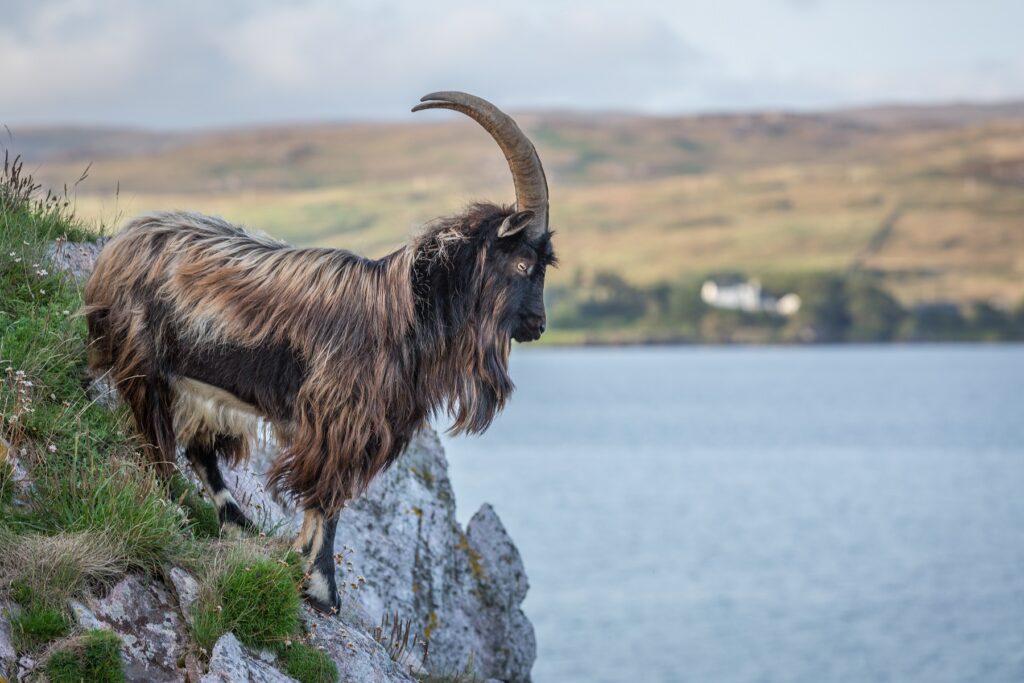
Otters are relatively common across most of the Inner Hebridean islands, but spotting one usually takes some patience and a large flask of tea. The tiny Slate Islands, close to Oban, seem to have particularly thriving populations, and would be a good place to begin any initial search. Calm days, particularly around dawn or dusk, are the best times to look around the coast or, during the
winter, if it has been cold enough to ice over the lochs, you might hear a distinctive plop as they dive under the ice.
While Islay and Tiree have healthy populations of brown hares, Raasay is a good place to try and spot reintroduced native mountain hares, which can also been seen on Mull and Skye, distinctive in their winter coats.
Marine marvels
While some whale and dolphin species leave in early autumn for more tropical waters, it’s still well worth keeping an eye out to sea from the ferry or on calmer days at the beach. Hebridean waters have some of the highest populations of harbour porpoises in Europe; these playful cetaceans are around the same length as humans are tall, with small, rounded dorsal fins and friendly looking faces. They can be seen year-round in inshore waters around headlands and bays, particularly those around the Small Isles, the Slate Islands and off the east coast of Jura. Twice the size of porpoises, with a more sharply pointed fin, bottlenose dolphins are also a resident species, and second most common of the resident winter cetaceans; the best places to see them are the Sound of Mull, around Iona, Coll and Tiree.
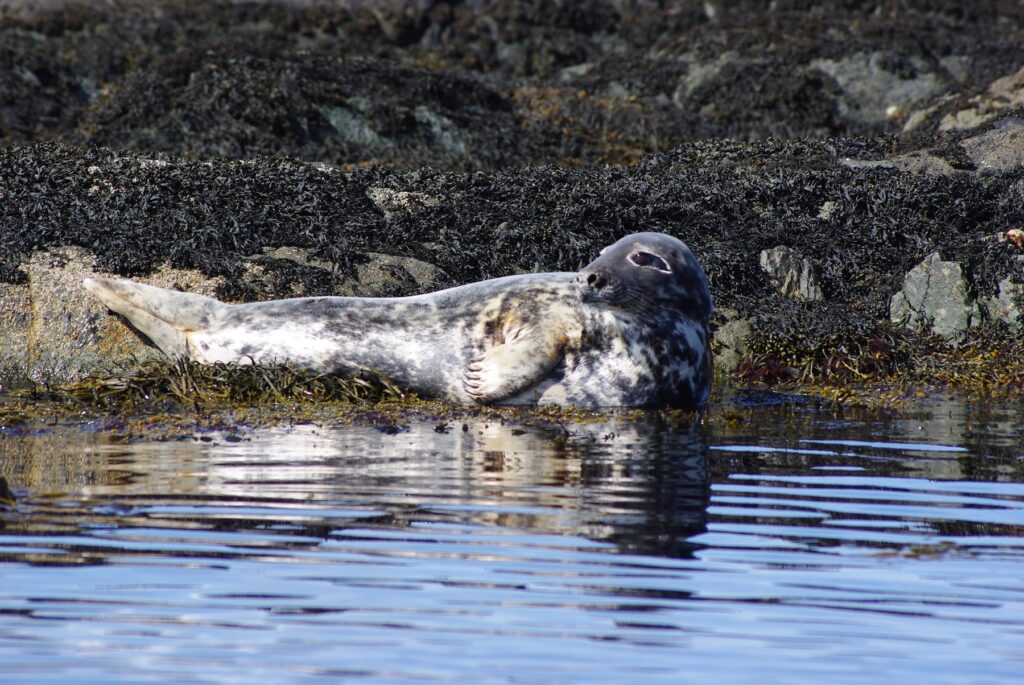
Alongside deer, seals are the Inner Hebrides’ most abundant and cooperative animals for less patient or experienced wildlife watchers. Tidal rocky protrusions, sheltered shores and estuaries are the best places to watch both grey and common (or harbour) seals, where they haul out with the falling tide. Salen Bay on Mull, Portnahaven, Muck and Dunvegan are all notably easy places to spot seals from land, while organised boat trips from many of the islands will often guarantee closer sightings. Grey seals have their pups in October and while it’s tempting to approach them for a better view, it’s dangerous for both adult and baby animals to be startled; keep a safe distance and don’t scare them into the sea. Of course, they do also bite, but you should never be close enough to test it.
More information
For more information, check out Katie Featherstone’s guide:
